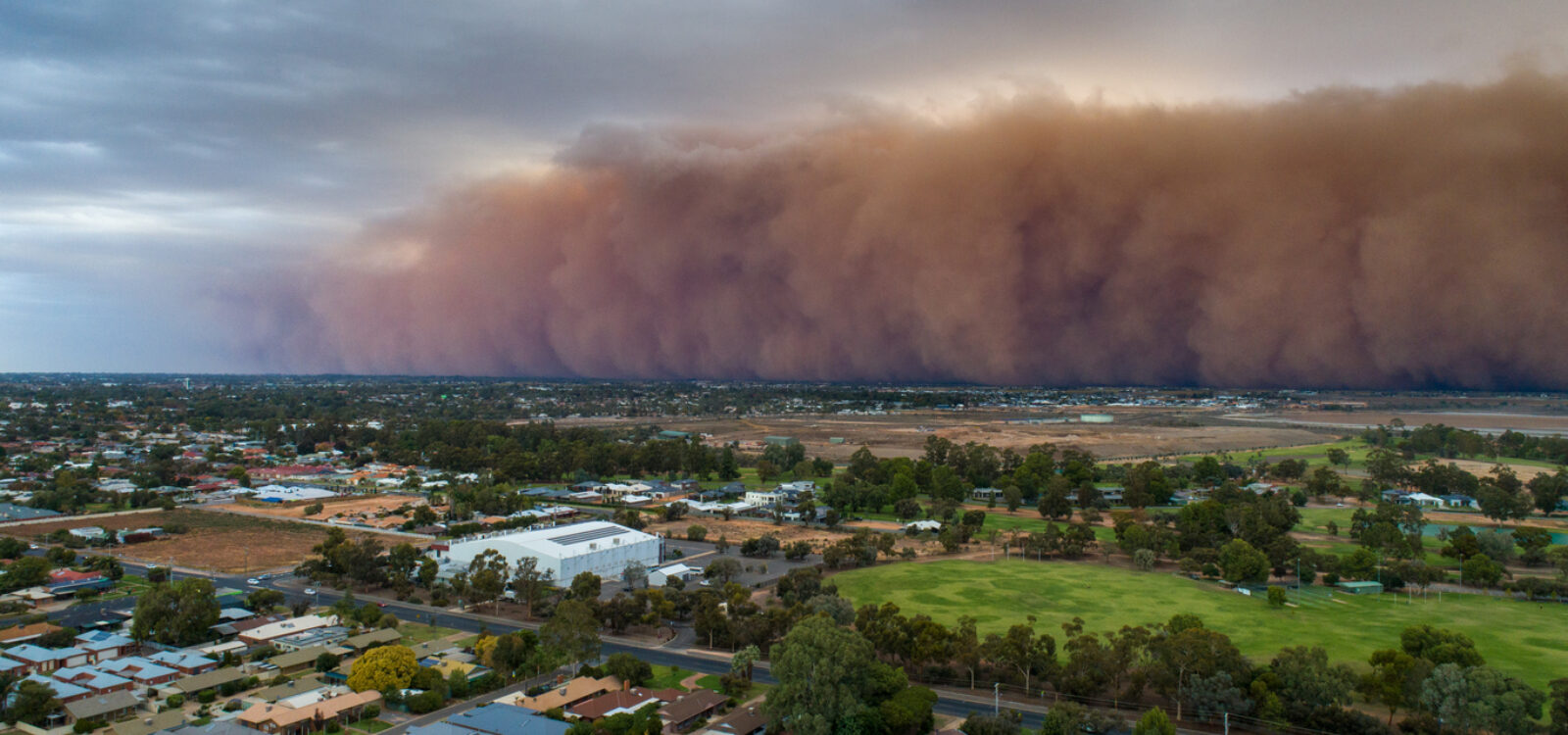
Record-Breaking Temperatures in August Lead to Extreme Winter
The Australian Actuaries Climate Index (AACI) for the winter of 2024 shows extreme high and low temperatures in all regions of Australia after winter heatwave.
The AACI shows that winter 2024 brought extreme weather in almost all areas of the country. Tasmania recorded its second highest composite index value ever, with only the spring of 2022 recording weather more extreme than the latest season in this region.
The high composite index values have primarily been driven by extreme high temperatures observed across Australia. Across the whole country, Australia had its 5th highest extreme high temperature index value ever, which was caused by an August heatwave[1]. The heatwave resulted from a high-pressure system which settled over Eastern Australia and the Tasman Sea.
Consequently, the high temperature index was positive for every single cluster in the Index. This means that maximum temperatures were more extreme than the 1981-2010 baseline period in all twelve of the clusters.
The most extreme results were the Southern Slopes (Tasmania) cluster, which covers all of Tasmania, and the Rangelands (North) cluster, which covers a large part of the outback. These clusters recorded their 4th and 5th highest high temperature index value, respectively.
The Bureau of Meteorology reports that during August, temperatures across the country were so extreme that the national records for highest monthly maximum, minimum and average temperatures were all broken[2].
For example, South Australia had an average maximum temperature anomaly of 4.63 degrees above the BOM’s baseline period. This relative difference is comparable to the difference in the average maximum temperature between August and October in Adelaide[3].
Elevated minimum temperatures were also observed. The extreme low temperature index was positive for every single cluster, indicating that minimum temperatures were unusually warm. This means that for the first time ever, every cluster had a positive value on both the extreme high and extreme low temperature indices.
Additionally, the Southern Slopes (Victoria), which includes Melbourne, had its highest ever extreme low temperature index value.
As mentioned in previous releases, warmer days and nights pose serious risks to Australian society. Heat stress is the leading cause of weather-related deaths globally[4] and climate change is expected to cause more food and water shortages and cases of vector-borne disease[5]. This is already being observed in California where warmer winters are leading to tick-borne diseases, such as Lyme disease, to occur during January and February for the first time[6].
Extreme rainfall showed mixed results this season, with most clusters recording index values close to zero. This indicates that the rainfall observed this winter was similarly extreme to the baseline period. This aligns with the BOM’s seasonal summary which stated that “the national area-averaged winter rainfall total was close to average”[7].
Looking forward
From August to November, the Bureau of Meteorology has predicted above average rainfall for large parts of eastern and southern Australia.
Both minimum and maximum temperatures are projected to be above average for most of the country[8]. There is also an increased chance of unusually high minimum and maximum temperatures (defined as in the top 20%).
The August heatwave and predictions of a warm spring have led the Australasian Fire and Emergency Services Authorities Council (AFAC) to predict an “increased bushfire risk” for large parts of Australia in their seasonal outlook[9]. Areas identified at risk are northern and central Queensland, the Northern Territory and western Victoria.
Overseas, predictions of an above-average Atlantic hurricane season[10] proved to be correct with Hurricanes Helene[11] and Milton[12] making landfall on the United States in late September and early October. While the losses are yet to be fully assessed, they are expected to be significant for both public and private insurers. The reverberations are likely to be felt by Australian insurers through the reinsurance market[13].
Background
The Index measures the frequency of extreme weather conditions and sea levels across Australia and how these vary over time. Components cover extreme high and low temperatures, extreme rainfall, consecutive dry days, extreme wind and sea level. The Index was launched in November 2018 by the Actuaries Institute and is updated four times a year by Finity Consulting for the Actuaries Institute.
Unlike many other measures, the AACI focuses on changes in the extremes. This is a more relevant metric for the insurance industry (and others) than averages, as it correlates more closely with damage. This is done by measuring how often we observe the current quarter’s observations exceeding the 99th percentile of the corresponding observations in the reference period of 1981-2010. More details and full results can be found on the microsite.
The purpose of the AACI is to provide a publicly available and objective measure of extreme weather conditions and is one way in which the actuarial profession can contribute to the assessment of climate risk.
Alongside the North American Actuaries Climate Index[14], it is one of two climate indices produced globally on behalf of actuarial associations and has been referenced extensively in the media and other reports[15].
Changes to the Index data
This quarter, the Index has been updated to include the newest release of the Bureau of Meteorology’s Australian Climate Observations Reference Network – Surface Air Temperature (ACORN SAT) data[16]. This dataset is used to monitor long-term temperature trends around Australia and is updated periodically to remove artificial influences on measurements. The newest release of ACORN SAT data (v2.5) has led to some small changes in the temperature indices, primarily in the Central Slopes, East Coast South and Rangelands South.
Additionally, a small number of rainfall stations have been replaced with neighbouring stations as the existing stations had stopped reliably producing data. The effect of this change on the overall and regional indices is negligible.
References
[1] Australian Broadcasting Corporation. (2024, August 26). Winter weather hits 40 degrees in August. ABC News. https://www.abc.net.au/news/2024-08-26/winter-weather-40-degrees-in-august/104271368
[2] Bureau of Meteorology. (2024). Monthly climate summary – August 2024 (IDCKGC1AR0). http://www.bom.gov.au/clim_data/IDCKGC1AR0/202408.summary.shtml
[3] Tourism Australia. (n.d.). Adelaide weather and climate. Australia.com. https://www.australia.com/en-nz/facts-and-planning/weather-in-australia/adelaide-weather.html
[4] World Health Organization. (n.d.). Climate change, heat, and health. https://www.who.int/news-room/fact-sheets/detail/climate-change-heat-and-health
[5] The Lancet. (2023). Climate and health: Examining the link [Article]. The Lancet Planetary Health, 7(3), 105-107. https://doi.org/10.1016/S2666-6065(23)00254-
[6] UC Davis Health. (2024, March). Experts warn climate change will fuel the spread of infectious diseases. https://health.ucdavis.edu/news/headlines/experts-warn-climate-change-will-fuel-spread-of-infectious-diseases-/2024/03
[7] Bureau of Meteorology. (2024). Monthly climate summary – August 2024 (IDCKGC2AR0). http://www.bom.gov.au/clim_data/IDCKGC2AR0/202408.summary.shtml
[8] Bureau of Meteorology. (n.d.). Climate outlooks: Australia’s climate outlooks. http://www.bom.gov.au/climate/ahead/outlooks/
[9] Australasian Fire and Emergency Service Authorities Council. (2024). Seasonal bushfire outlook – Spring 2024. AFAC. https://www.afac.com.au/auxiliary/publications/seasonal-outlook/seasonal-outlook-article/seasonal-bushfire-outlook-spring-2024
[10] National Oceanic and Atmospheric Administration. (2024). NOAA predicts above-normal 2024 Atlantic hurricane season. https://www.noaa.gov/news-release/noaa-predicts-above-normal-2024-atlantic-hurricane-season
[11] National Weather Service. (2024). Hurricane Helene – 2024. National Oceanic and Atmospheric Administration. https://www.weather.gov/ilm/Helene2024
[12] NBC News. (2024). Hurricane Milton live updates. https://www.nbcnews.com/weather/hurricanes/live-blog/hurricane-milton-live-updates-rcna174774
[13] Reinsurance News. (2024). An active hurricane season could have profound effects on the reinsurance industry – Moody’s. https://www.reinsurancene.ws/an-active-hurricane-season-could-have-profound-effects-on-the-re-insurance-industry-moodys/
[14] Actuaries Climate Index. (n.d.). Home page. https://actuariesclimateindex.org/home/
[15] Natural Disaster Royal Commission. (n.d.). Australian Actuaries Climate Index: Some comments on extremes. https://naturaldisaster.royalcommission.gov.au/publications/exhibit-1-006003-shp5010010001-australian-actuaries-climate-index-some-comments-extremes
[16] Bureau of Meteorology. (n.d.). ACORN-SAT: Australian Climate Observations Reference Network – Surface Air Temperature. http://www.bom.gov.au/climate/data/acorn-sat/
CPD: Actuaries Institute Members can claim two CPD points for every hour of reading articles on Actuaries Digital.






